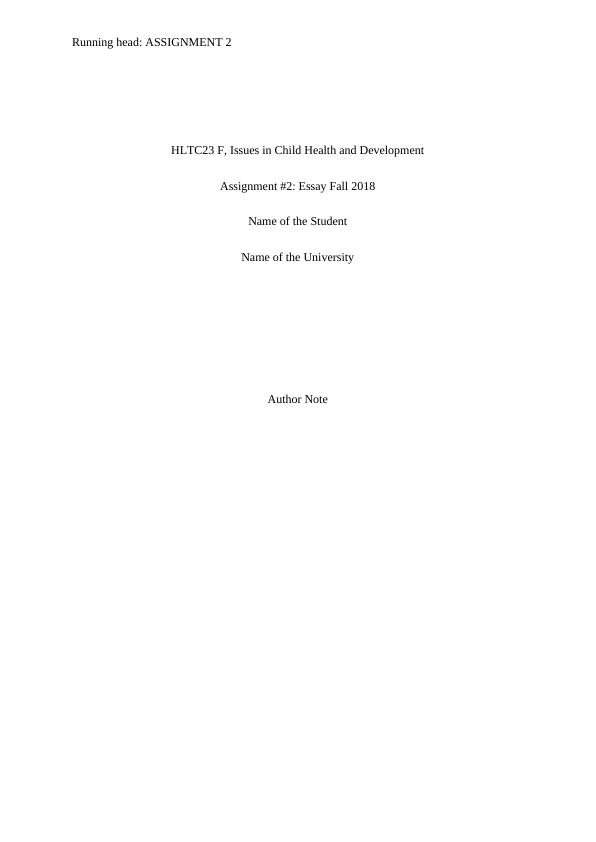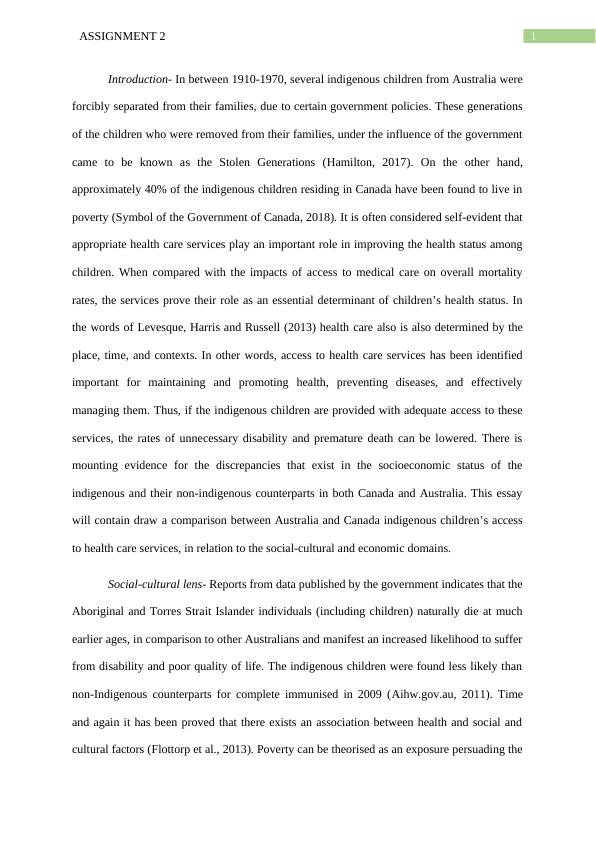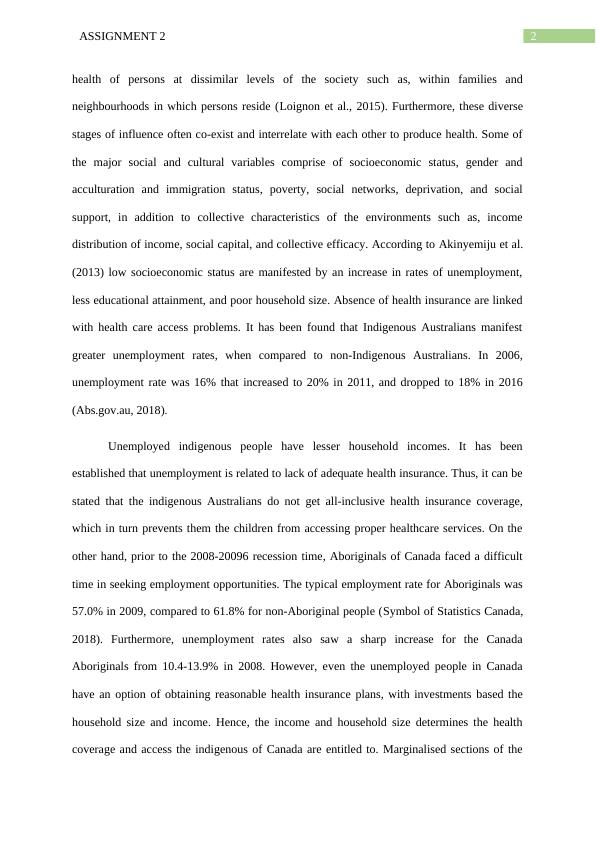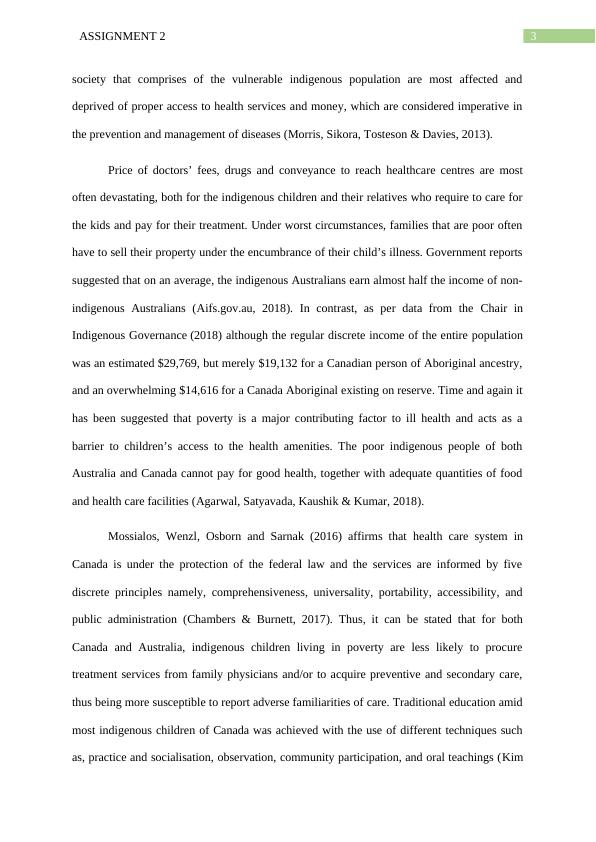Comparison of Indigenous Children's Access to Healthcare in Australia and Canada
15 Pages4371 Words237 Views
Added on 2023-05-29
About This Document
This essay compares the access to healthcare services for Indigenous children in Australia and Canada, focusing on social-cultural and economic domains. It discusses the impact of poverty, education, gender, and economic considerations on healthcare access and highlights government policies and funding to address the disparities.
Comparison of Indigenous Children's Access to Healthcare in Australia and Canada
Added on 2023-05-29
ShareRelated Documents
End of preview
Want to access all the pages? Upload your documents or become a member.
Managing the Needs of Diverse Client Groups
|12
|3850
|359
Social Determinants of Health: Examining the Association between Natural Health Effects and Socioeconomic Disadvantage in Northern Territory of Australia
|14
|3475
|52
Child Adolescent and Family Centered Care
|10
|3013
|27
Australian Aboriginal Women's Health Issues
|5
|1099
|14
Childhood Obesity: Indigenous Children and Health Disparities
|9
|2566
|70
Lack of Medical Resources in Rural Areas- Challenges and aspirations
|5
|1199
|201




